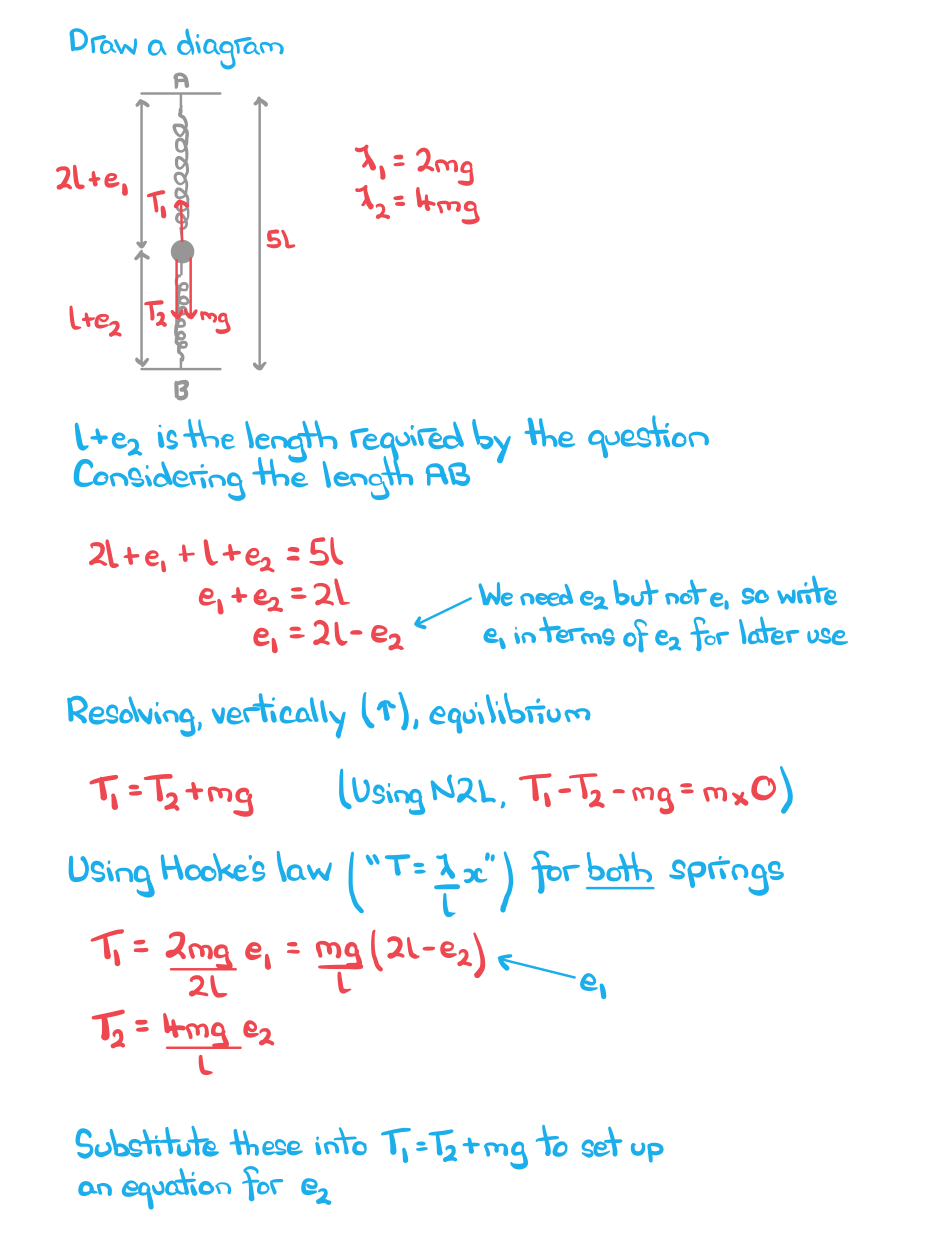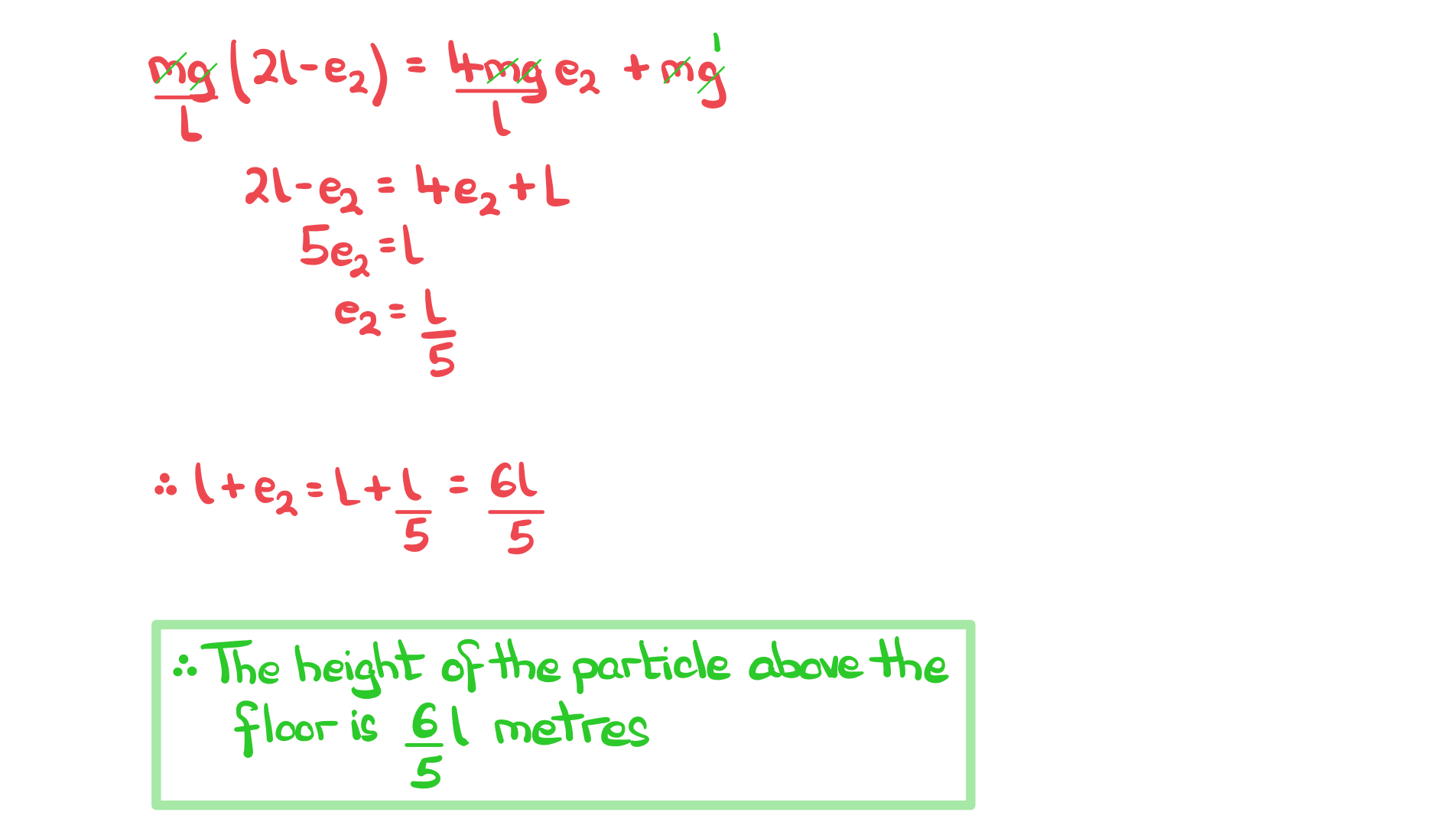Problem Solving with Strings & Springs (Edexcel A Level Further Maths): Revision Note
Exam code: 9FM0
Problem solving with strings & springs
What if the particle is fixed between two different springs?
There will be two different tensions and extensions
For extensions, you can use
and
or, in the case of equilibrium extensions,
and
You will need an extra equation relating
to
, found by summing all the lengths
e.g. if the total distance is
then
Springs can go into compression, but if you're not told (or it's not clear), draw both springs under tension
If it turns out that
or
are negative later on, then you know they were actually under compression
If a particle is attached to the midpoint of a spring, you can either
Treat the spring as a whole
The two tensions either side have the form
where
is the total extension
Or treat the particle as being fixed between two half-springs, halving their lengths (natural lengths and extensions), but keeping the same modulus of elasticity (the material they're made from hasn't changed)
The two tensions either side have the form
This simplifies to
(showing that both methods give the same answer)
What if the particle is suspended at angles by two elastic strings?
A particle of mass
kg has a weight of
N acting downwards
The particle could be held up (suspended) by two light elastic strings acting at angles to the horizontal
Label the different tensions
and
If angles are not given, use the geometry of the situation to find
and
(by trigonometry)
This helps later for resolving the tensions in Newton's 2nd Law
If a particle is attached to the midpoint of an elastic string and forms a triangle due to its weight, you can either
Treat the string as a whole (calculations with full extension and full natural length)
Or treat the setup as a particle attached to two identical half-strings (each with half the natural length, half the extension, but the same modulus of elasticity)
In either case, this situation will be symmetric
If the particle is pulled vertically downwards and released, it will accelerate vertically upwards
What other questions can be asked about springs and strings?
There are so many different situations that it's impossible to know, but the tools used are the same
Newton's 2nd law, Hooke's law and the work-energy principle
If the situation has uniform rods suspended by light elastic strings, you may also need to take moments
Some questions may be more algebraic
Other questions could have a change halfway through
e.g. the string breaks and the particle becomes a projectile
Examiner Tips and Tricks
Using your own subscripts can help to avoid confusing tensions and extensions from situations with multiple strings or springs
Worked Example
A light spring of natural length metres and modulus of elasticity
N has one end attached to the point A on a ceiling and its other end attached to a particle of mass
kg suspended vertically beneath A.
A different spring of natural length metres and modulus of elasticity
N has one end attached to the particle and its other end attached to the point B on the floor, where B is a distance of
metres vertically beneath A. The system is in equilibrium.
Find, in terms of , the height of the particle above the floor.



Unlock more, it's free!
Did this page help you?